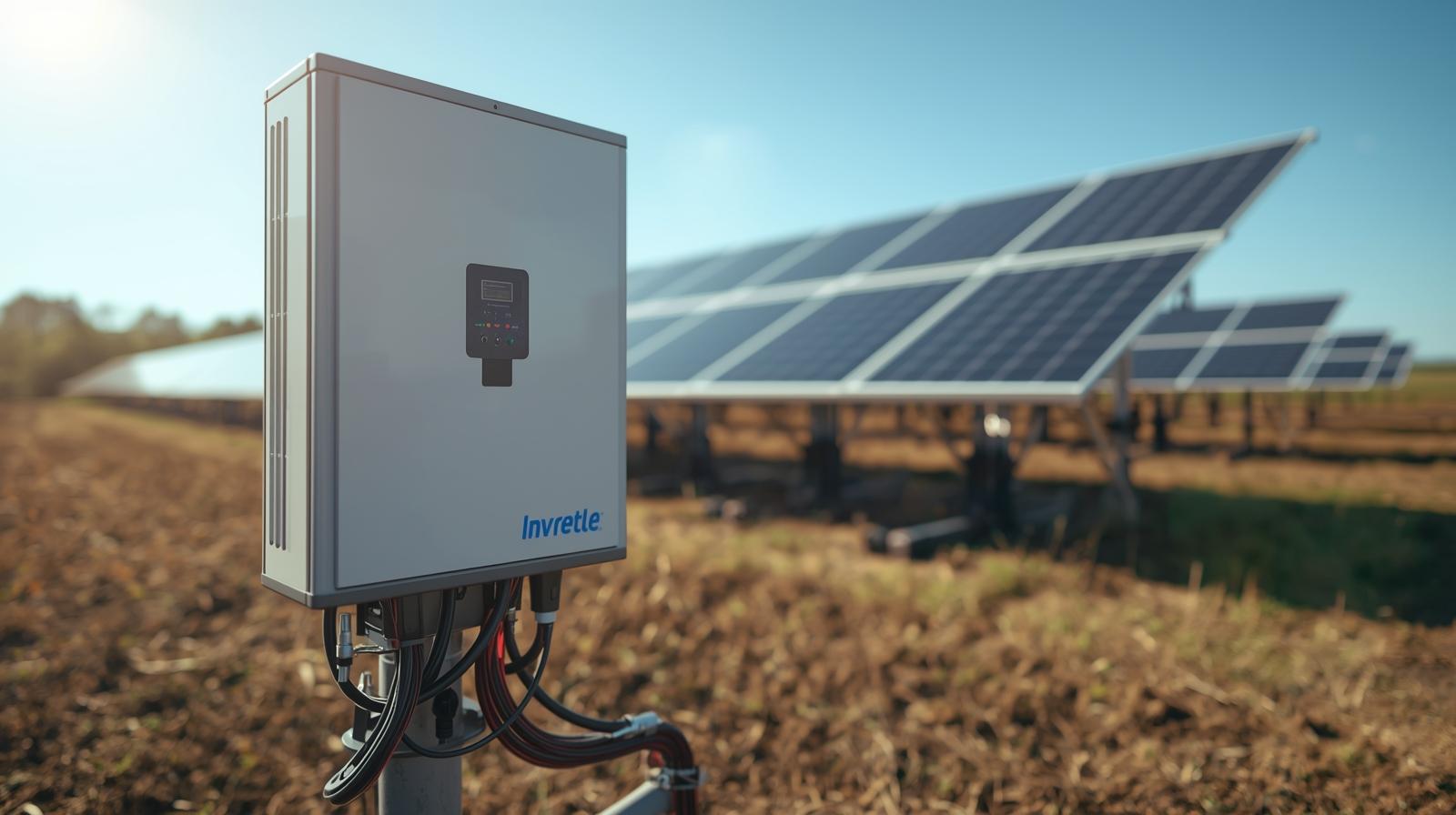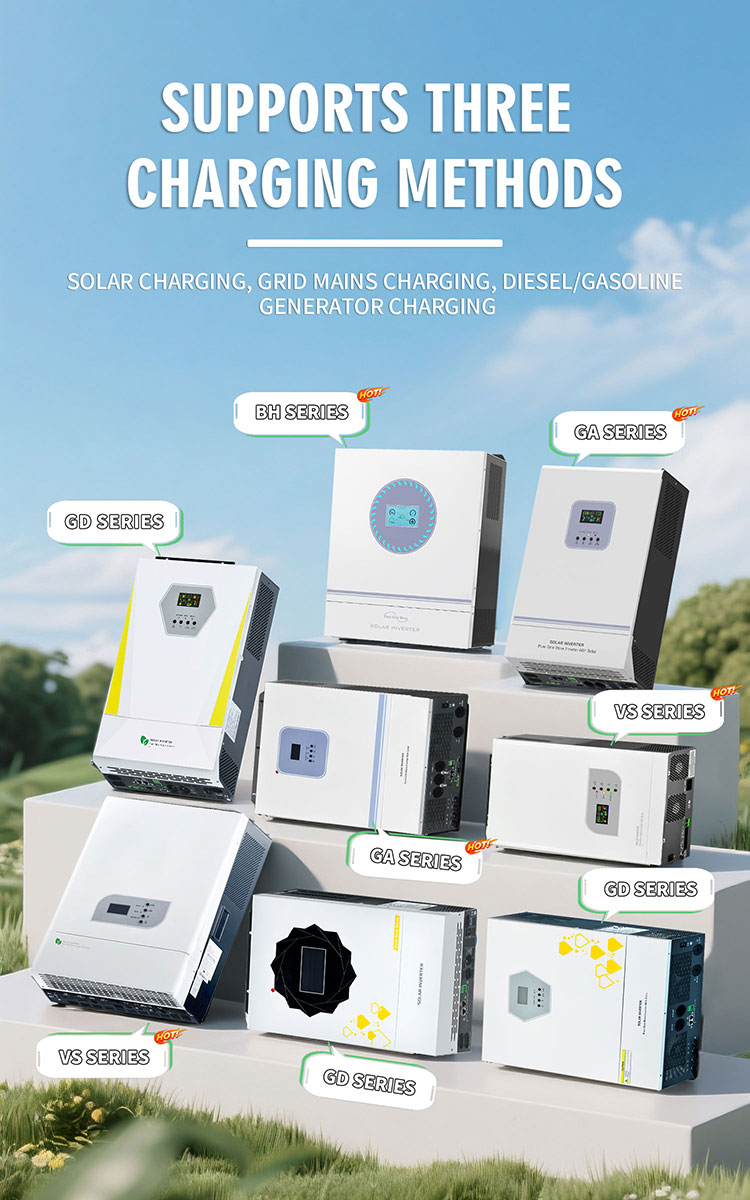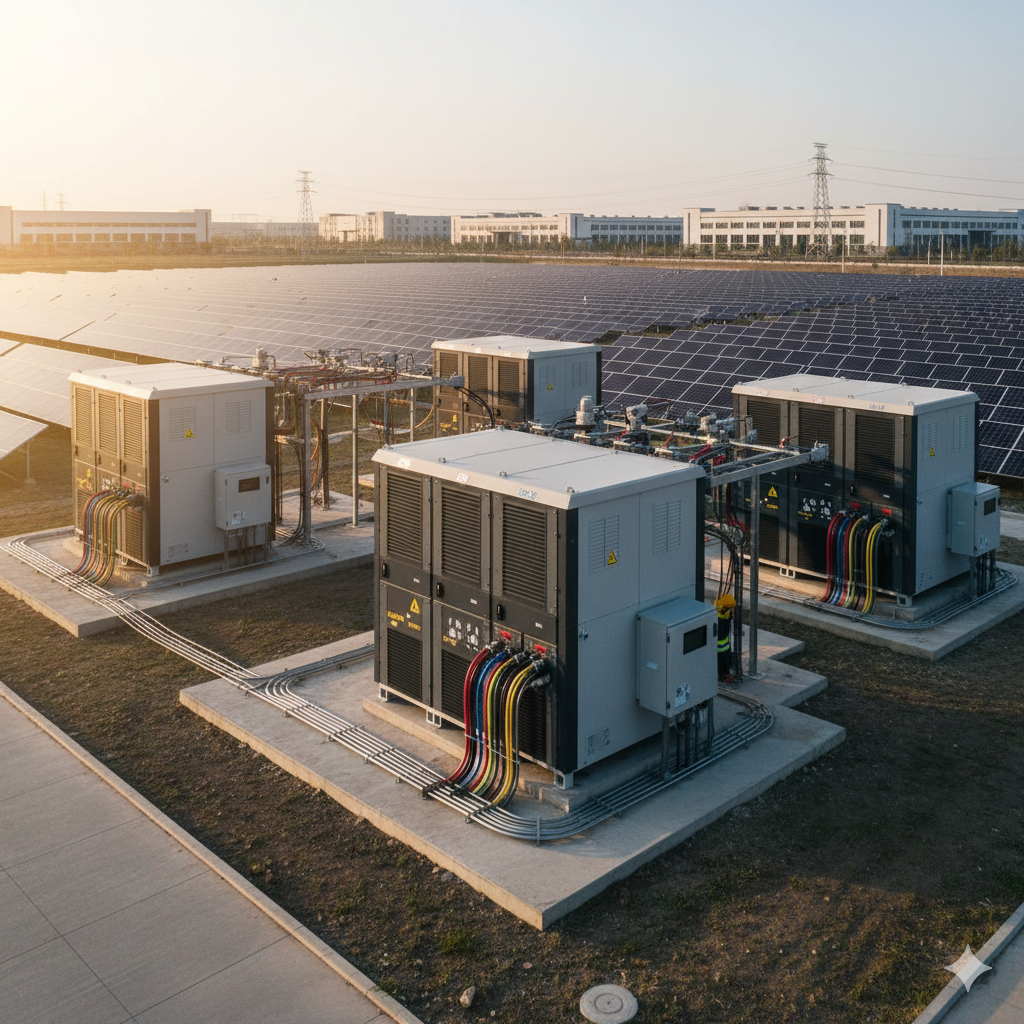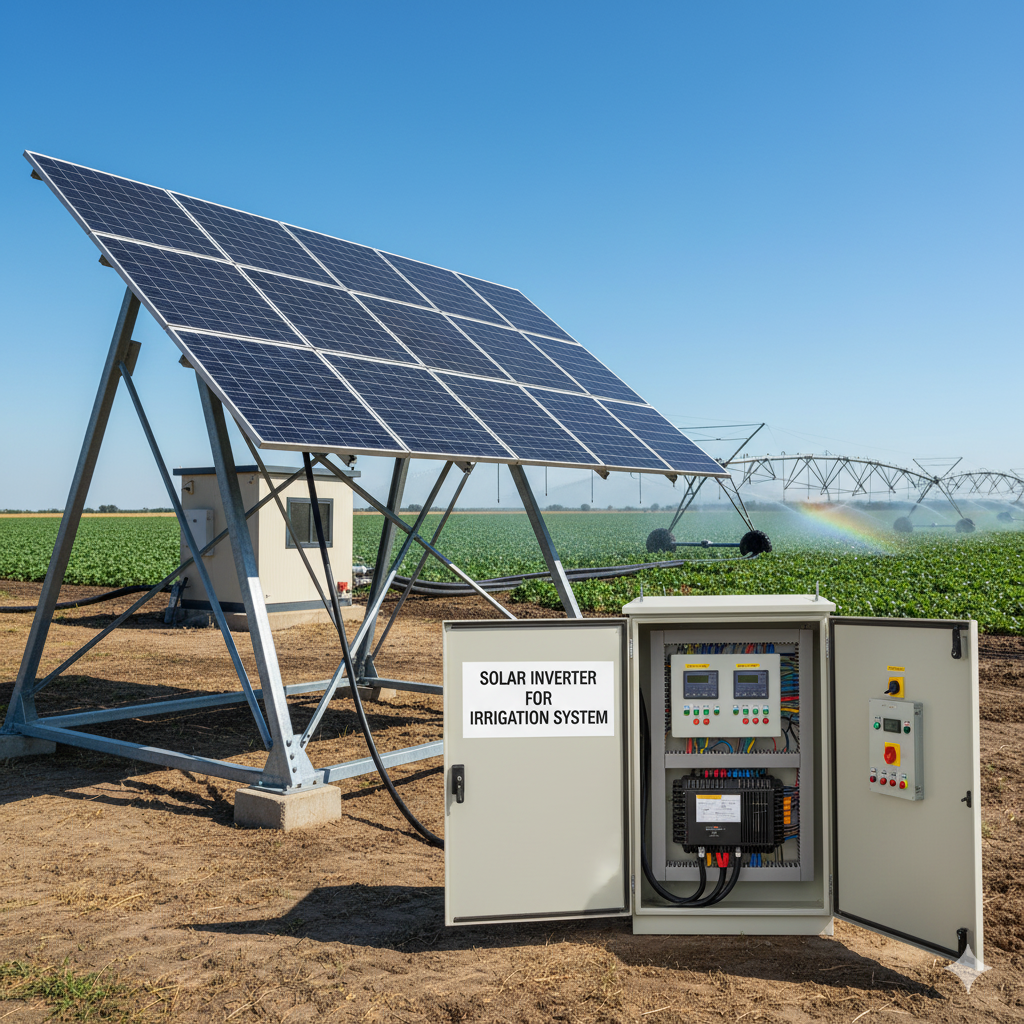
Powering Agriculture with Smarter Energy Systems
Water pumping is one of the most energy-intensive operations in agriculture. Many farms still depend on unstable grid power or costly diesel generators — systems that are expensive to maintain and prone to interruptions.
A solar inverter for farm water pump replaces this uncertainty with consistent, renewable power. By converting sunlight into AC electricity, it drives irrigation pumps, distributes water efficiently, and supports crop growth even in remote or off-grid areas.
The result is simple yet transformative: stable irrigation, lower costs, and greater energy independence for modern farms.
How Solar-Powered Pumping Systems Work in Real Farms
A solar inverter is the bridge between sunlight and water flow. It converts the DC power generated by solar panels into AC power for running standard electric pumps.
| Component | Function | Benefit |
|---|---|---|
| Solar Panels | Generate electricity from sunlight | Free, renewable energy source |
| Solar Inverter | Converts DC to AC, controls load | Enables use of existing AC pumps |
| Pump Motor | Moves water from wells or tanks | Continuous, efficient water supply |
| Battery (optional) | Stores excess energy | Maintains operation during cloudy hours |
| Monitoring Unit | Tracks system performance | Helps prevent pump dry run or overload |
Unlike fixed systems, hybrid inverters automatically switch between solar, grid, and battery input — ensuring that irrigation continues no matter the weather or power conditions.
Field-Tested Benefits of Solar Inverters for Farm Pumps
Farmers who adopt solar inverters experience more than just cost savings. They gain operational stability, energy security, and environmental resilience.
Reduced Energy Costs
After installation, operational expenses drop significantly — typically by 60–80% compared to diesel pumping.
Continuous Irrigation
Hybrid inverters guarantee power during cloudy days or night irrigation using stored energy.
Minimal Maintenance
With no moving fuel parts and self-cooling design, solar inverters require minimal upkeep.
Environmental Compliance
Zero emissions and quiet operation support sustainable farming and carbon-reduction goals.
Easy Integration
Existing AC or DC water pumps can be connected without major system redesign.
Comparing Power Sources for Agricultural Pumping
| Energy Source | Upfront Cost | Long-Term Cost | Maintenance | Suitability |
|---|---|---|---|---|
| Diesel Generator | Medium | Very High | Frequent | Remote areas, short term |
| Grid Electricity | Low | Medium | Moderate | Areas with stable grid |
| Solar Inverter System | Medium | Very Low | Minimal | Universal, all climates |
According to IRENA (International Renewable Energy Agency, 2024), solar-driven pumping systems can save up to $2,500 per year per farm and reduce CO₂ emissions by more than 1.3 tons annually — a major benefit for large irrigation networks.
Real-World Scenarios Where Solar Pumping Excels
-
Rural Farms Without Reliable Grid Access
-
Solar inverters ensure round-the-clock irrigation for crops like maize, sugarcane, and rice.
-
-
Hilly or Remote Terrain Farms
-
Hybrid inverters maintain constant flow where long grid cables are impractical.
-
-
Greenhouse & Controlled Irrigation Systems
-
Integrated sensors and smart monitoring allow precision water delivery.
-
-
Livestock Farms
-
Automated water supply to troughs powered by off-grid solar ensures animal welfare.
-
Each scenario demonstrates how inverter-driven water pumps deliver both productivity and sustainability.
Matching the Right Inverter to Your Pumping Needs
Choosing the correct inverter involves understanding pump power, energy availability, and irrigation demand.
| Pump Type | Recommended Inverter Power | Application |
|---|---|---|
| Submersible pump (1–3 HP) | 2–4 kW | Small-scale irrigation or livestock water supply |
| Surface pump (3–6 HP) | 4–7 kW | Medium-sized farms and field irrigation |
| Centrifugal pump (6–12 HP) | 8–12 kW | Deep well or multi-line systems |
| Large-scale water stations | 15 kW+ | Regional irrigation or community agriculture |
Tip: Choose an inverter with MPPT (Maximum Power Point Tracking) and IP65 enclosure to ensure efficiency and long-term field protection.
Frequently Asked Questions
Q1: Can solar inverters run large three-phase pumps?
Yes, most advanced hybrid inverters handle up to 380V three-phase output, ideal for deep well or industrial-scale systems.
Q2: Is battery backup necessary?
Not always. For daylight irrigation, panels and inverters are sufficient. Batteries are recommended for evening or cloudy-day operations.
Q3: How long do these systems last?
With proper installation, inverters typically last 8–10 years, while solar panels can exceed 20 years.
Q4: Can it integrate with drip irrigation systems?
Yes. Smart inverters support controllers and flow sensors for precision water management.
The Future of Farm Irrigation Is Solar-Driven
Solar inverters are redefining how farms manage water and energy — reducing costs, improving efficiency, and making agriculture more resilient to power shortages and climate change.
At Thlinksolar, our hybrid solar inverters are engineered for agricultural reliability — featuring wide voltage range, real-time monitoring, and robust outdoor protection. Designed for long-term operation, they keep your pumps running efficiently season after season.
To explore sustainable inverter solutions for your farm water systems, visit our homepage or get in touch via our contact page.


